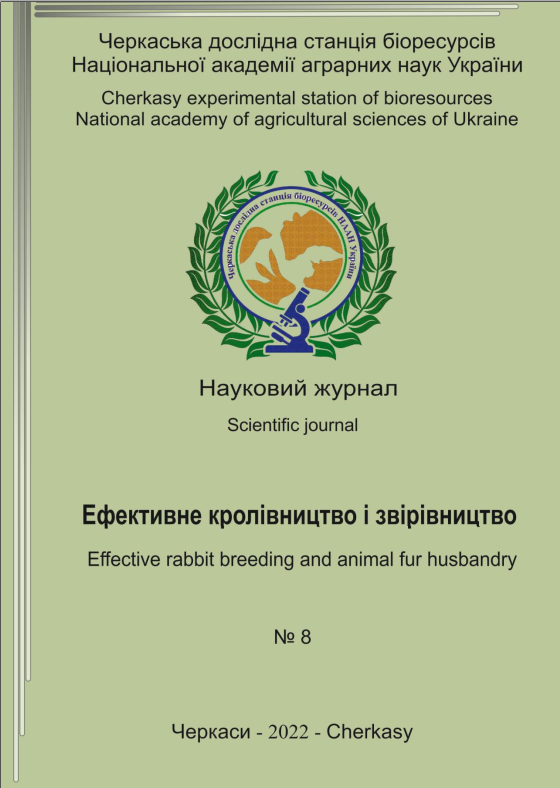MORPHOMETRIC CHARACTERISTICS OF STRONGYLOIDES PAPILLOSUS AND SEASONAL DYNAMICS OF STRONGYLIDOSIS IN RABBITS
DOI:
https://doi.org/10.37617/2708-0617.2022.8.92-103Keywords:
Strongyloidosis, Strongyloides papillosus, seasonal dynamics, pathogen morphology, seasons, assosiated invasion, rabbitsAbstract
Diagnosis of rabbits with srongyloidosis is difficult because the clinical
picture for this disease is nonspecific, and the final diagnosis can only be made
using laboratory identification of larvaes in feces. Strongyloidosis invasion of
rabbits has remained stably high in Ukraine for many years and requires further
study. It is mainly found as a component of mixed parasitoses. The most common
associative invasions in rabbits were found in the combinations “eimeriosis +
passalurosis” (in 22.7%), “eimeriosis + passalurosis + pisiformis cysticercosis”
(in 4.9%), and even 5 rabbits (0.45%) had a combination "emeriosis +
passalurosis + cysticercosis + fasciolosis."
According to the results of our studies, it was found that strongyloid
infestation of rabbits is most often recorded as assosiated invasion (73.49%) with
pathogens of various parasitic diseases. Strongyloidiasis, as mono-invasion, was
diagnosed in 26.51% of the total number of animals affected by this pathogen. We
found that most often S. papillosus was determined as part of a two-component mixtinvasion of rabbits (55.42%). Strongyloidosis was determined less frequently
in the form of ternary mixtinvasions (18.07%).
The seasonal dynamics of rabbit strongyloidosis, the intensity and extensity
of invasion increase in the spring (54.81% and 166.95 eggs / g), namely from
March to May with a peak of EI and II in May (59.46% and 219.81 ± 24.68
eggs/g).
Thus, the results of indicators of strongyloidosis invasion in rabbits on the
territory of farms in the Dnipropetrovsk region and morphometric indicators of S.
papillosus complement the scientific data of previous studies and facilitate the
differential diagnosis of the disease.


